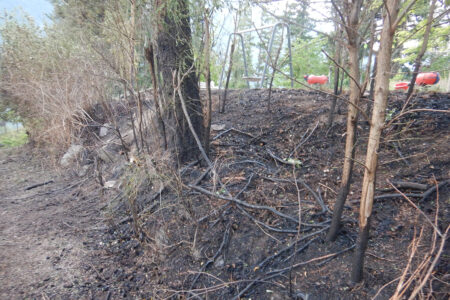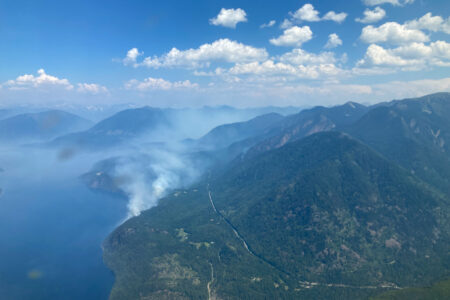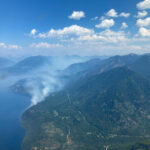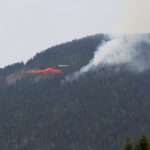Interfor's results continue to improve
Editor’s Note: Meetings with employees held last week at the Grand Forks sawmill gave the staff a snapshot of International Forest Products Limited’s (Interfor) current position. With warm weather causing early break up, the mill may not be able to continue operating through the spring, but overall the operations have been going well as reflected in the company’s press release below.
Interfor reported a net loss of $5.0 million or $0.11 per share in the fourth quarter of 2009. Excluding one-time items, the loss for the fourth quarter of 2009 was $5.4 million or $0.11 per share compared to a net loss of $7.4 million or $0.16 per share in the third quarter of 2009. On the same basis, the Company reported a net loss of $3.7 million or $0.08 per share in the fourth quarter of 2008.
Included in the results for the fourth quarter was a provision of $1.5 million ($1.1 million or $0.02 per share after tax) relating to long-term incentive compensation. Similar costs expensed in the third quarter amounted to $0.7 million ($0.5 million or $0.01 per share); in the fourth quarter last year the company recorded a recovery of $0.9 million ($0.6 million or $0.01 per share after tax).
EBITDA for the quarter (adjusted to exclude “other income”) was positive at $5.7 million compared to $3.6 million in the third quarter and $1.7 million in the fourth quarter of 2008.
“Higher operating rates and sales activity were the key factors underlying the improvement in our results,” said Duncan Davies, Interfor’s President and Chief Executive Officer.
“Production at the new Adams Lake sawmill continues to ramp up nicely”, said Davies, “and the Grand Forks mill, which resumed operations in October, made a strong contribution as well. Our U.S. mills also performed well in the quarter, with production up more than 10% compared to the preceding quarter.”
The trends in product pricing were mixed in the fourth quarter. SPF 2X4 gained US$14 or 7% quarter-over-quarter as low in-market inventories and increased volumes to China and other offshore markets served to tighten demand/supply balances.
Cedar – which is an important product line for Interfor – continued to adjust downward in the quarter, while pricing in Japan was stable.
Adding to the challenge was the rising value and volatility of the C$, which averaged US$0.946 in the quarter versus US$0.911 in the third quarter, and traded between US$0.912 and US$0.976.
Lumber production totalled 245 million board feet in the quarter (or the equivalent of 62% of rated capacity) compared to 180 million board feet in the third quarter, with Adams Lake and Grand Forks accounting for most of the increase. In the fourth quarter of 2008, production amounted to 118 million board feet.
Log production at the Company’s Canadian operations was 533,000 m3 in the fourth quarter compared to 378,000 m3 in the third quarter and 290,000 m3 in the fourth quarter last year. In the U.S., log procurement was matched against mill consumption. U.S. log prices continued to firm in the quarter.
Lumber sales, including wholesale volumes, totalled 234 million board feet compared with 181 million board feet in the third quarter and 133 million board feet in the fourth quarter of 2008.
In the quarter Interfor used $12.7 million in cash after working capital changes reflecting primarily the increase in accounts receivable and inventories associated with the Company’s increased activity level. Capital spending amounted to $4.0 million, primarily for road construction. Net debt ended the quarter at $140.7 million or 28% of invested capital versus $128.6 million or 26% at the end of the third quarter and $167.8 million or 29% at the end of the fourth quarter of 2008.
Positive signs are beginning to emerge in the U.S. and offshore, laying a foundation for better market conditions in 2010. In the U.S., the pace of housing sales has improved, the inventory of unsold homes has dropped and housing prices are showing signs of stabilizing. Housing starts have also improved, but remain at historically depressed levels.
Most significantly, increased demand from China and other offshore markets has improved demand/supply balances in North America leading to higher prices on most commodity items.
All things considered, however, the near-term outlook remains uncertain. The economic recovery is fragile at best and employment has been slow to recover. More significantly, the number of homes in the foreclosure process represents a material overhang of potential inventory which needs to be addressed before a meaningful increase in new house construction or product demand can be achieved.






















